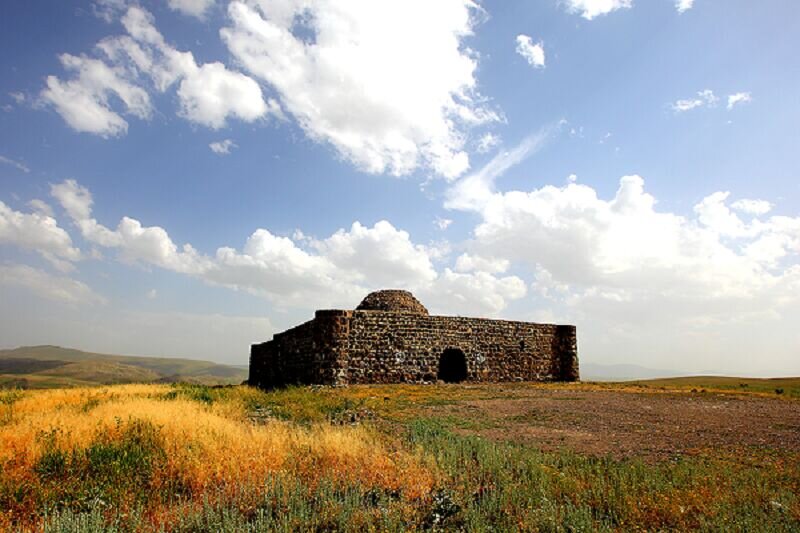Shah-Abbasi caravanserai in Ardebil joins shortlist for collective UNESCO tag

TEHRAN- A Safavid era (1501-1736) caravanserai in Saein village, northwestern Ardebil province, has recently received cultural heritage experts’ preliminary approval to join the shortlist of historical Iranian caravanserais being prepared for a possible inscription on the UNESCO World Heritage list.
The Shah-Abbasi caravanserai, which was inscribed on the National Heritage list in 1983, played a significant role in the economic prosperity of the Silk Road, and due to its historical importance, efforts were being made to register the structure on the prestigious list, provincial tourism chief has announced.
The documentation of the caravanserai has been completed and it is expected to gain UNESCO tag along with some other historical caravanserais, Nader Fallahi said on Sunday.
The structure is named after Shah Abbas the Great (r. 1588 – 1629), who ordered the construction of such roadside inns across the country.
Last year, the tourism ministry announced that Iran is developing a dossier for a selection of its historical caravansaries for a possible inscription on the UNESCO World Heritage list.
In this regard, cultural heritage experts are assessing such monuments that are scattered across the country to make a shortlist in terms of their architecture, historical and cultural values.
Caravanserai is a compound word combining “caravan” with “Sara”. The first stand for a group of travelers and Sara means the building. They often had massive portals supported by elevated load-bearing walls. Guest rooms were constructed around the courtyard and stables behind them with doors in the corners of the yard.
Iran’s earliest caravanserais were built during the Achaemenid era (550 -330 BC). For many travelers to Iran, staying in or even visiting a centuries-old caravanserai can be a wide experience as they have an opportunity to feel the past, a time travel back into a forgotten age.
ABU/AFM
Leave a Comment